How to Get Perfect Black Shades in Vietnamese Mooncakes with Black CTB Food Color
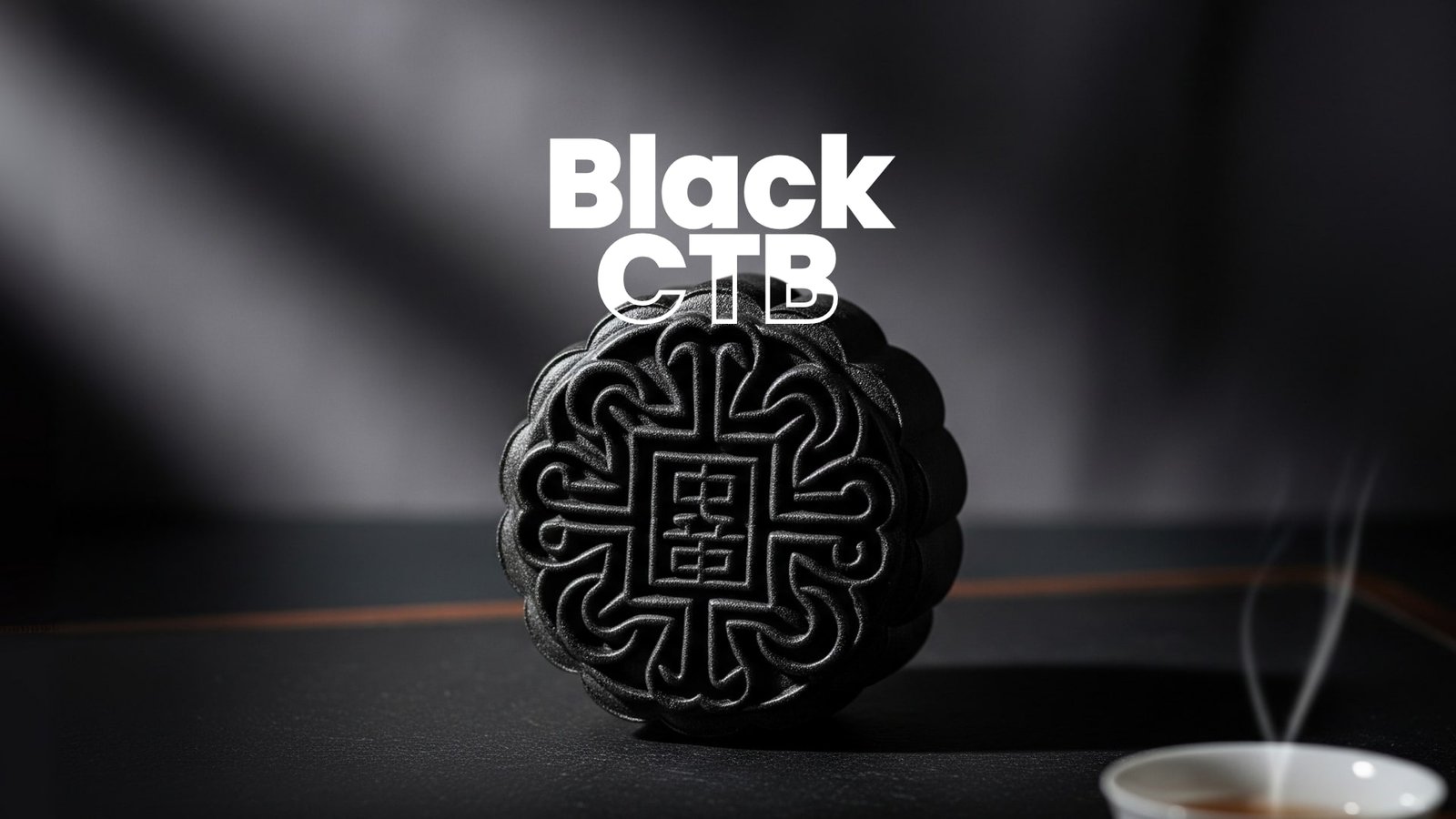
Black mooncakes have been turning heads in Vietnam. They stand out on the shelf, make a bold gift, and give a modern twist to a tradition that’s centuries old. Bakeries are finding that customers, especially younger buyers, love the visual contrast of a rich black crust against golden or pastel fillings.
If you want that kind of colour impact without trial and error, Black CTB food colour for mooncakes in Vietnam is the way forward. It’s consistent, stable in heat, and it doesn’t mess with the taste of your recipe. No strange aftertaste, no uneven tones, no fading after baking.
Some bakers still worry about using synthetic colour. The truth is, when it’s food grade and within legal limits, Black CTB is safe. It’s approved for food use in Vietnam, tested for purity, and already trusted by many bakeries producing for the Mid-Autumn Festival rush.
So if your goal is to offer something that looks premium, stays that way after baking, and keeps customers coming back, this is where to start.
Understanding Black CTB Food Colour
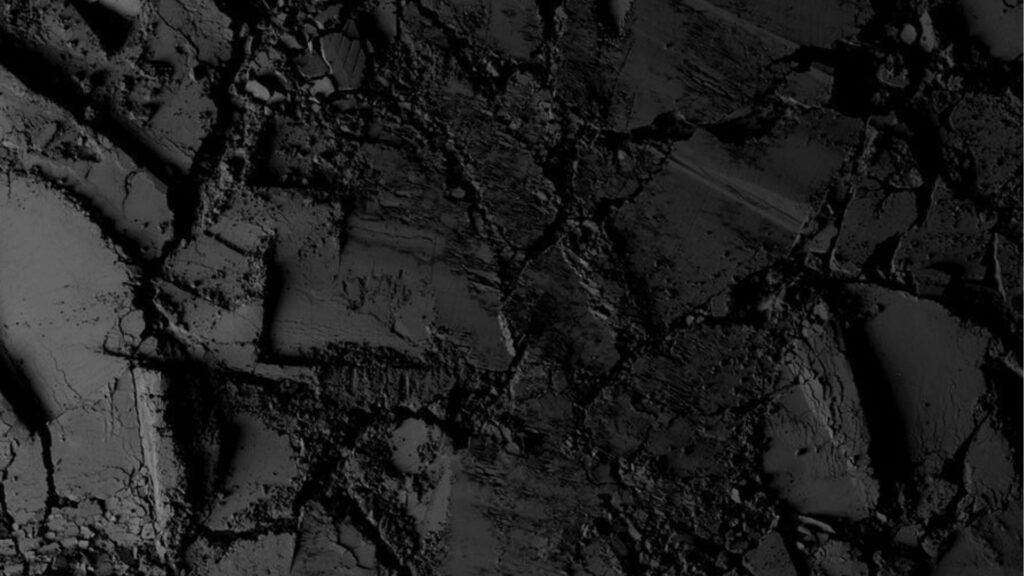
Black CTB is a synthetic black food dye, also known in the industry as CI Food Black. It is a bakery-safe colour made to deliver deep, even tones without affecting the taste or texture of what you are making. In mooncakes, that matters because you want the crust to hold a rich shade without bleeding into the filling or fading during baking.
Depending on the formulation, Black CTB may have an E number classification, which helps bakers and food manufacturers know it has been tested and approved for use in specific markets. In Vietnam, it is permitted for food use under regulated limits.
Why Black CTB Food Color works best for mooncakes
You might be thinking, why not just use natural colours like vegetable carbon or squid ink? Here’s the thing. Black CTB is heat stable, which means it keeps its colour even in the hot oven. It gives you a true black, not dark grey or brownish tones. And it doesn’t affect the flavour.
Here’s a quick comparison so you can see the difference:
| Feature | Black CTB Food Color | Vegetable Carbon | Squid Ink |
| Heat stability | High | Medium | Low |
| Colour intensity | Deep black | Grey-black | Brownish |
| Flavour impact | None | Slight earthy | Seafood |
When you’re making a premium product like mooncakes, these details matter.
For trust and compliance, reliable suppliers provide Black CTB with certifications such as ISO, FSSC, Halal, and FDA approval. These give you proof that the colour meets food safety standards recognised across different markets. If you are producing for local sales or export, that assurance can save you time and worry when it comes to inspections or paperwork.
Why Mooncake Bakers in Vietnam Love Black CTB
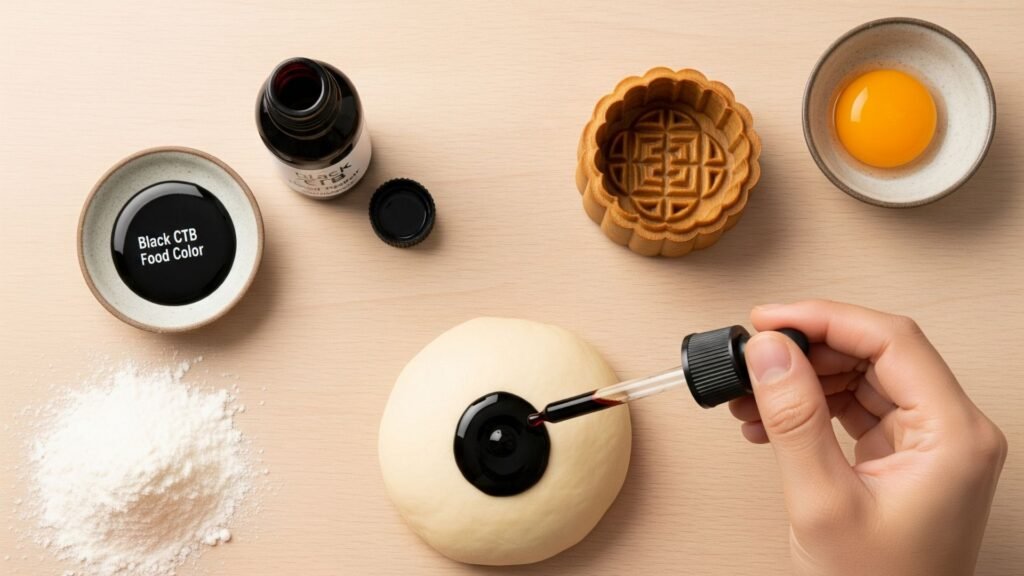
One of the biggest reasons bakers keep using Black CTB food colour in Vietnam is consistency. Every batch comes out with the same deep, even shade, whether you are making 50 mooncakes or 5,000. There is no guessing, no shade difference from tray to tray.
It is also efficient. Black CTB has strong tinting strength, so you need less product to reach the colour you want. That means cost savings, especially if you produce in large volumes during the Mid-Autumn Festival season.
Then there is versatility. Black CTB works just as well in mooncake dough as it does in fillings like lotus seed paste or mung bean paste. You can create a striking black crust, a rich dark filling, or both, without changing how the product bakes or tastes.
Proof of quality: CTB colour in action
When tested in bakeries, Black CTB Food Color kept its shade 95% consistent from one batch to the next. Side-by-side photos show a deeper, cleaner black compared to vegetable carbon.
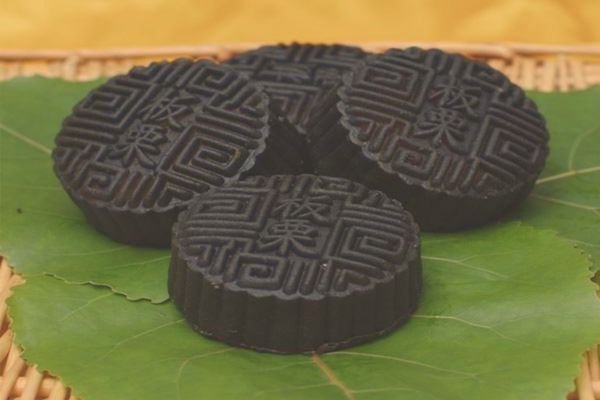
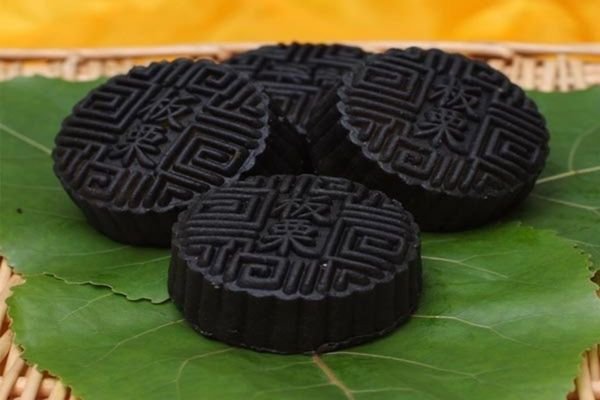
A pie chart could show:
- 95% consistent batches
- 4% minor shade variation
- 1% colour fade due to storage issues
It also comes with COA and MSDS, plus FSSAI and ISO certification. That’s the paperwork you need for export compliance and peace of mind.
Common mistakes and how to avoid them
| Mistake | What Happens | How to Fix It | Proof / Tip |
| Over-using Black CTB | Results in a greyish or muddy tone instead of a deep black | Use measured amounts based on batch size, test a small sample before scaling up | Compare baked samples with 0.5%, 1%, and 2% dosage to see best shade |
| Adding directly into dry mix | Uneven colour, streaks in the dough after baking | Pre-mix Black CTB with a small amount of water or oil before adding to the dough | Mix a teaspoon in 20 ml water, then blend into dry ingredients |
| Using expired or poorly stored colour | Reduced vibrancy, dull final shade | Store in an airtight container in a cool, dry place, away from sunlight | Check manufacture date and COA before use |
Answering Safety Concerns
One of the most common questions is whether Black CTB food colour is safe for food. The answer is yes, as long as it is used within legal limits and sourced from a certified supplier. In Vietnam, it is approved for food use and must meet strict standards before it reaches your bakery.
There are a few myths that still put some bakers off. One is that Black CTB changes the flavour of mooncakes. In the right dosage, it has no impact on taste. Another is that it carries health risks even in small amounts. In reality, approved synthetic black food dye is tested for safety, and the limits are set well below any harmful level.
If you want full transparency, ask for the Certificate of Analysis (COA) and Material Safety Data Sheet (MSDS) from your supplier. These documents show exactly what is in the colour, confirm it meets food grade requirements, and prove it has passed quality checks. Reliable suppliers will always provide them without hesitation.
Inspiring Mooncake Variations with Black CTB
Black CTB food colour opens up plenty of creative options for mooncake makers in Vietnam. One idea is galaxy swirl mooncakes. By mixing black and white paste in a light swirl, you get a marbled effect that stands out when sliced.
Another is pairing Black CTB with black sesame. The colour deepens the natural shade of the sesame paste while keeping the nutty flavour intact. The result is a richer look and a taste that matches the dark tone.
If you work with premium packaging, Black CTB can help match the product to the brand. A deep black crust in a gold or metallic box creates strong visual impact and a high-end feel without changing the baking process.
Recap:
Black PN food colour can make a real difference in Vietnamese mooncakes. It gives them a premium look, stays safe when used within approved limits, and helps bakeries stand out in a competitive market. Sourcing from a trusted supplier means you get consistent quality and peace of mind.
If you want to test it for yourself, you can explore supply options or request a sample to see how it works in your recipes.
If you’re ready to give your mooncakes that rich, eye-catching black, Black CTB could be the ingredient your customers remember you for.
FREQUENTLY ASKED QUESTIONS :
What is the composition or main dye components of Black CTB?
Black CTB is a blend of dyes with CI numbers 14720 + 19140 + 42090. These correspond to multiple synthetic colorants.
What purity or quality specifications are typical for Black CTB?
Some typical specifications (from similar color blends): minimum dye content, maximum insoluble matter, limits on heavy metals (lead, arsenic, mercury), and limit for subsidiary dyes / impurities. For example, for “Black PN / E151” similar dyes, the supplier lists max % insoluble matter, etc.
What labeling is required when using Black CTB?
Labels should list “Black CTB” or the specific E/C.I./CI numbers of the dyes involved (e.g. “CI 14720, CI 19140, CI 42090”) as ingredients/additives, following local food additive labeling rules.
What testing methods exist for detecting Black CTB in food products?
Quality control labs often use HPLC (High Performance Liquid Chromatography), spectrophotometry, and extraction/cleanup protocols to measure dyes such as E151-Black, E155-Brown, etc. Similar methods can detect and quantify components of Black CTB
Is Black CTB vegan / halal / kosher?
Since it is a synthetic dye, it is generally vegan. For halal or kosher status, it depends on how it is manufactured and whether any animal-derived or cross-contaminated substances are used. Certification must be checked. (No specific citation found for this exact question for E151).
Does Black CTB have any flavor or smell impact on food?
No. As a color additive, it is not intended to affect taste or aroma, provided it’s used correctly. People may notice staining (on tongue or teeth) if used heavily, but flavor is usually not impacted. (Inferred from typical synthetic dye behavior).
What packaging helps preserve Black CTB color?
Opaque or light-resistant packaging, avoiding high temperature exposure, minimal oxygen and moisture, properly sealed containers. (Standard best practices for preserving synthetic dyes.)